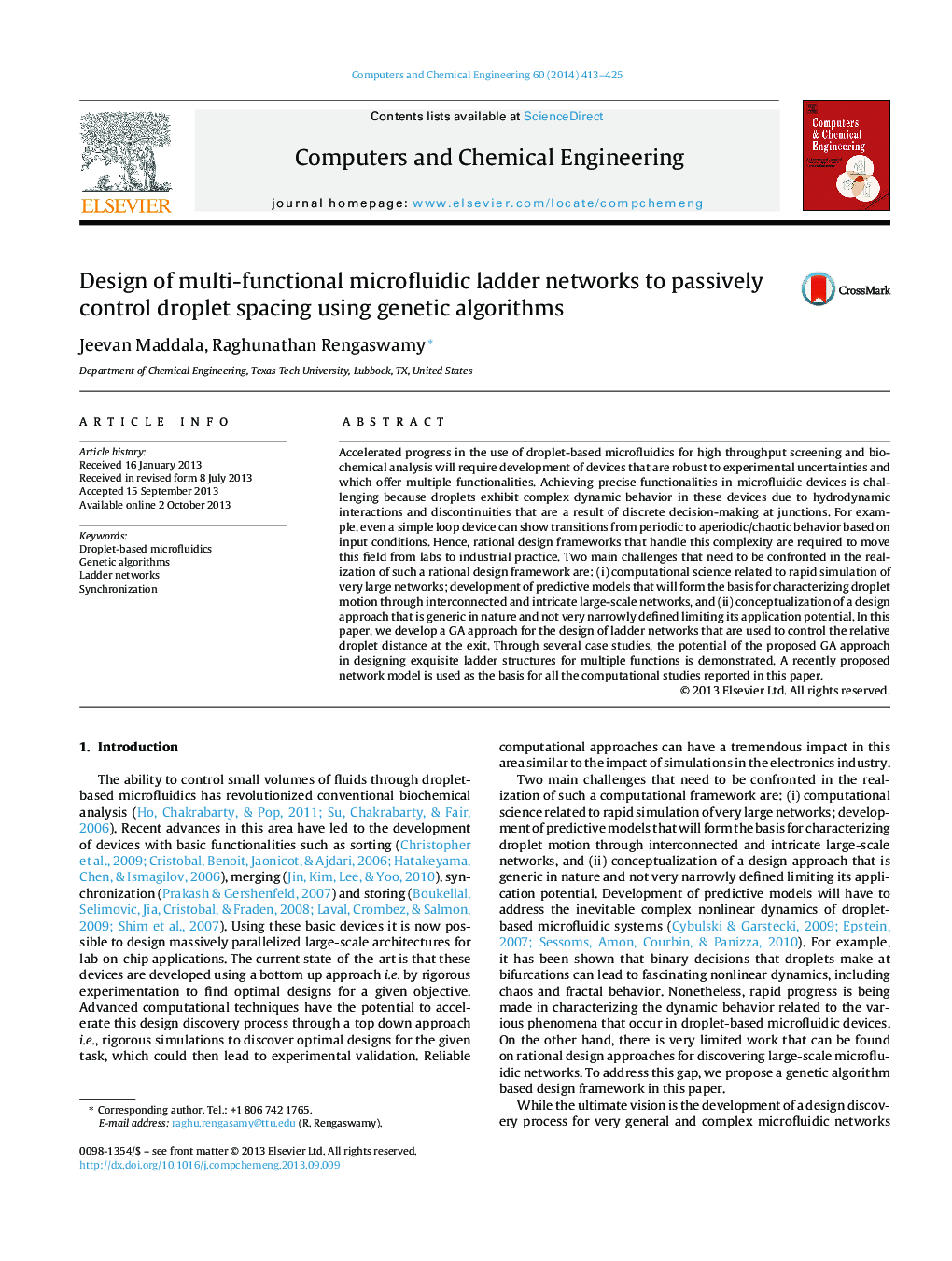| Article ID | Journal | Published Year | Pages | File Type |
|---|---|---|---|---|
| 172452 | Computers & Chemical Engineering | 2014 | 13 Pages |
•A novel design approach for microfluidic ladder networks proposed for the first time.•Several multifunctional ladder network designs that have not been explored before are identified.•A new application area for genetic algorithms is proposed.
Accelerated progress in the use of droplet-based microfluidics for high throughput screening and biochemical analysis will require development of devices that are robust to experimental uncertainties and which offer multiple functionalities. Achieving precise functionalities in microfluidic devices is challenging because droplets exhibit complex dynamic behavior in these devices due to hydrodynamic interactions and discontinuities that are a result of discrete decision-making at junctions. For example, even a simple loop device can show transitions from periodic to aperiodic/chaotic behavior based on input conditions. Hence, rational design frameworks that handle this complexity are required to move this field from labs to industrial practice. Two main challenges that need to be confronted in the realization of such a rational design framework are: (i) computational science related to rapid simulation of very large networks; development of predictive models that will form the basis for characterizing droplet motion through interconnected and intricate large-scale networks, and (ii) conceptualization of a design approach that is generic in nature and not very narrowly defined limiting its application potential. In this paper, we develop a GA approach for the design of ladder networks that are used to control the relative droplet distance at the exit. Through several case studies, the potential of the proposed GA approach in designing exquisite ladder structures for multiple functions is demonstrated. A recently proposed network model is used as the basis for all the computational studies reported in this paper.
